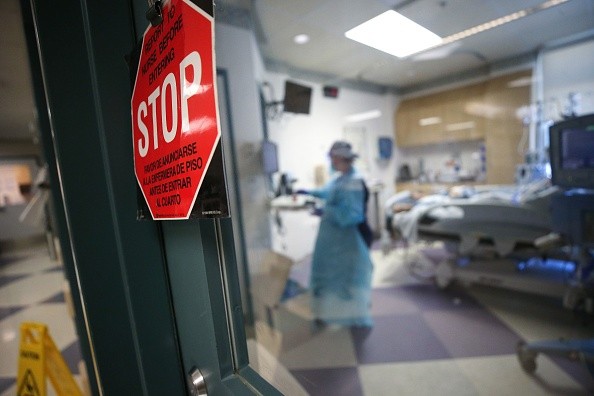Health Care Workers Overwhelmed by Rapid Rise in COVID-19 Hospitalizations
As COVID-19 cases rise rapidly across the United States, health care workers say they are overwhelmed and even the resources of medical facilities.

At least 160,000 new COVID-19 cases in the U.S. were reported on Thursday, according to Johns Hopkins University data. The reported cases were the highest total single day since the pandemic started.
According to CNN, Johns Hopkins data showed that the number could pass 11 million in the next four days, making it the fastest addition of another million cases yet.
Dr. Ashok Rai, Prevea Health president and CEO in Wisconsin, told WBAY-TV on Thursday that the COVID-19 cases are above what they can tolerate now but "still save lives."
Rai admitted that he doesn't know why COVID-19 infections continue to get worse. Rai said health care workers were already tapped out, and hospital beds are getting full every day.
Rai said they need help from society as the solution was outside of their walls now, and "it's no longer health care's only job to fix this."
The country set a record for hospitalizations for the third consecutive day, which now total over 67,000. This week, two states have surpassed one million total coronavirus infections.
The surge in cases caused states to bring back restrictions. Idaho was rolling back to stage two of its reopening, prohibiting gatherings of more than 10 people indoors and outdoors except for religious and political gatherings, Governor Brad Little announced on Friday.
Meanwhile, Oregon Governor Kate Brown announced a two-week "freeze" in the state. The freeze limits gatherings to a maximum of six people, close bars and restaurants for in-person dining, and limit the capacity of faith-based meetings to 25 individuals indoors and 50 outdoors.
Retail and grocery stores are limited to a maximum capacity of 75 percent, while indoor and outdoor recreation facilities and event venues will be closed.
Read also: Texas Surpasses 1 Million Coronavirus Cases, Ranks Highest in US
On the other hand, Maine Governor Janet Mills announced that Massachusetts residents would not be exempted from Maine's quarantine protocols for out-of-state travel.
Meaning, on Monday, Massachusetts residents who want to enter Maine will need a 14-day quarantine or provide a negative COVID-19 swab test with a sample taken within two days prior to arrival.
Though New Hampshire and Vermont residents are still exempted from these quarantine restrictions, Mills said.
Target vaccines to start December or January
On Thursday, a top U.S. official said every American who wants to get a COVID-19 vaccine could have it as early as April.
Alex Azar, Health and Human Services Secretary, told CNN that they would initially have target vaccinations in December and January.
Azar noted that there would be enough vaccines for "all of our most vulnerable citizens" in December.
He added that all the senior citizens, emergency first responders, and health care workers would have it in January. But a top Operation Warp Speed official said any eventual COVID-19 vaccine would be distributed across territories and states based on their populations.
Read also: Study Finds Two White House Reporters Caught Close to Identical 'Rare' Strains of COVID-19
Subscribe to Latin Post!
Sign up for our free newsletter for the Latest coverage!
© 2025 Latin Post. All rights reserved. Do not reproduce without permission.













